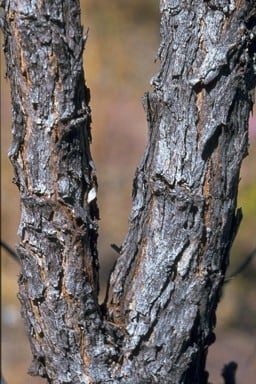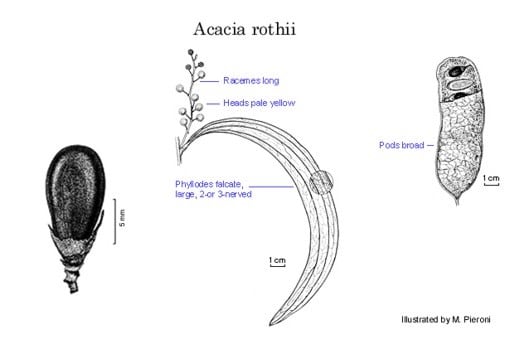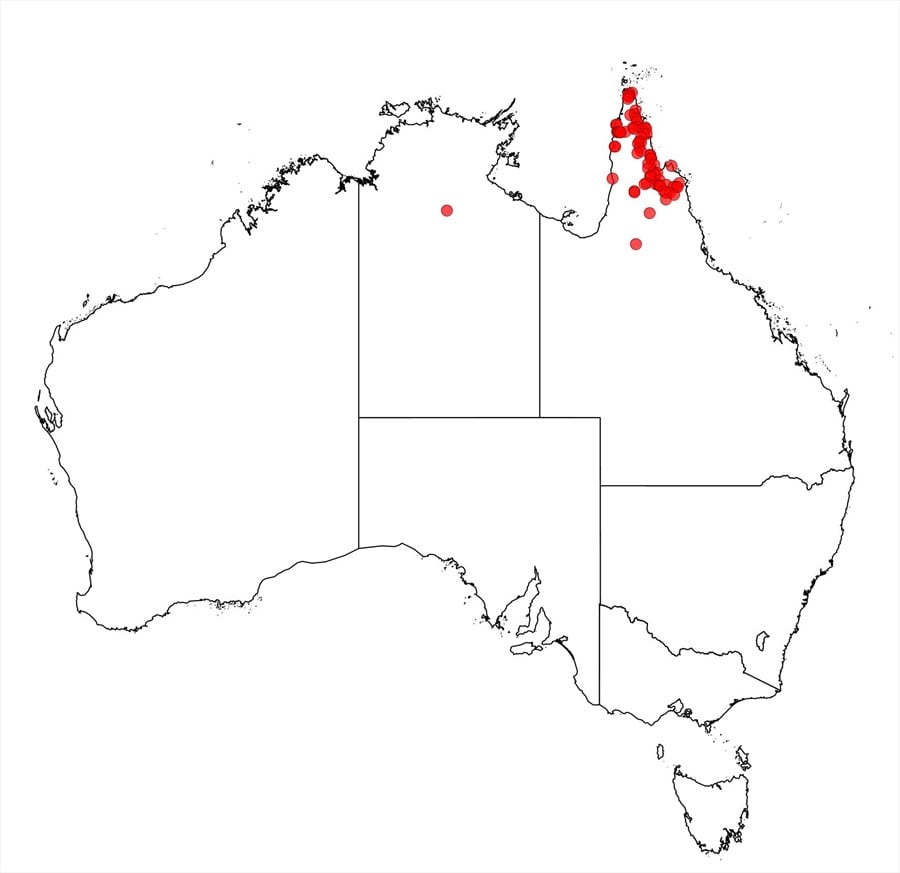Acacia rothii F.M.Bailey
WATTLE
Acacias of Australia
Family
Fabaceae
Distribution
Occurs on Cape York Peninsula S to Palmer R., northern Qld. The N.T. occurrences given in B.R.Maslin & L.Pedley, W. Austral. Herb. Res. Notes 6: 104 (1982), were based on misidentifications of A. mimula.
Description
Tree 6–12 m high. Bark rough, dark grey-brown. Branchlets angular at extremities, glabrous. Phyllodes narrowly oblong-elliptic, falcate, 15–25 (–30) cm long, (1–) 1.5–2.5 (–4.5) cm wide, obtuse, glabrous, with 2 or 3 prominent longitudinal nerves; secondary nerves anastomosing in open reticulum; main gland basal, with 1 or 2 additional smaller glands often on upper margin. Inflorescences racemose; raceme axes 5–9.5 cm long, glabrous; peduncles 8–15 (–25) mm long, glabrous; heads globular, 5.5–6 mm diam., c. 50-flowered, pale yellow. Flowers 5-merous; sepals 3/4-united. Legumes flat, to 15 cm long, 3–4.5 cm wide, woody, transversely reticulately nerved, glabrous, tardily dehiscent; margins narrowly winged. Seeds transverse, oblong to elliptic, 8–12 mm long, slightly shiny, dark brown; funicle fleshy, folded beneath the aril.
Habitat
Grows in loam, sand and lateritic red earth in eucalypt communities, and occasionally in vine thickets.
Specimens
Qld: 15°33'S, 142°42'E, J.R.Clarkson 3779 (PERTH); Weipa, A.Morton AGM598 (PERTH).
Notes
Closely related to A. mimula (N.T.) which is distinguished by its narrower pods and often shorter phyllodes and smaller stature.
FOA Reference
Data derived from Flora of Australia Volumes 11A (2001), 11B (2001) and 12 (1998), products of ABRS, ©Commonwealth of Australia
Author
Minor edits by J.Rogers
R.S.Cowan, B.R.Maslin
This identification key and fact sheets are available as a mobile application:
URL: https://apps.lucidcentral.org/wattle/
© Copyright 2018. All rights reserved.








